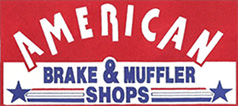Alignment – Potholes and less than optimum driving conditions can throw your vehicle out of alignment. If your vehicle is pulling to one side or displays any signs of veering off to one side, you should have your alignment checked and readjusted once spring arrives.
Tires – Potholes and rough driving surfaces during winter months can take a toll on your vehicle’s tires. If you have a tire gauge, check tire pressure against the recommended pressure for your vehicle and particular type of tire. If you maintain the ideal pressure, you will save money at the pump and prolong the life of your tires. You might also want to consider a tire rotation.
Brake Check – Spring is also a great time to check your brakes. Brakes generally lose performance slowly, over a longer period of time, so we might not notice if they are not functioning properly.
Oil Change – For a typical driver, you generally change the oil every 3 or 4 months, which corresponds perfectly with the change in seasons. Once Spring is here, get an oil change, that includes topping off of fluids. Proper fluid levels are critical for your vehicle’s best performance.
Wiper Blades – Although people use wiper blades often, they are often something easily forgotten. Once winter is gone, you should replace old blades or clean newer ones that have been punished by icy and uneven windshields, salt and grime. Don’t forget the rear blade if you have one.
Hoses and Belts – Cold weather can be especially tough on your vehicles many hoses and belts. They should all be inspected thoroughly.
Check your Battery – Winter weather can cause problems for your battery’s connections. Check posts and connections and make sure they are free from any dirt, grime or corrosion. If the posts are dirty, remove the cables, negative cable first. Your local dealer, mechanic or auto parts store will have advice on cleaning battery posts. Or if you are uncomfortable doing it yourself, allow them to do it.
Car Wash – Wash your vehicle thoroughly. The salt, sand and debris from winter driving can damage your vehicle’s exterior, so wash it as soon as temperatures rise and stay above freezing. Be sure to hit the underside of your vehicle, as well. That is where corrosive elements can do the most damage – even though you never see it. Spring is also a good time to check your entire vehicle for rust, which can worsen during the winter months.
Paint Touch Up – You might have spent much of the last few months with your vehicle covered with snow, dirt or road grime. After you wash your vehicle, your vehicle might have small scratches or blemishes that need a paint touch-up. Buy a small amount of matching vehicle paint to do it yourself, or consult your local body shop for a touchup.
Wax – Late March or early April is a good time to give your car a good wax. Spring rains will roll right off and your vehicle will be much easier to clean the next time you decide to wash it.
Interior – Your floor mats and carpets have probably seen better days after snow, salt, grime and winter debris are constantly brought into your vehicle. If you have special all-weather floor mats, a simple hosing off will do wonders. If your floor mats are carpeted, vacuum them and clean any stains. With the floor mats out of the car, vacuum the interior carpets and around the various cracks and crevices of your vehicle’s floor.
